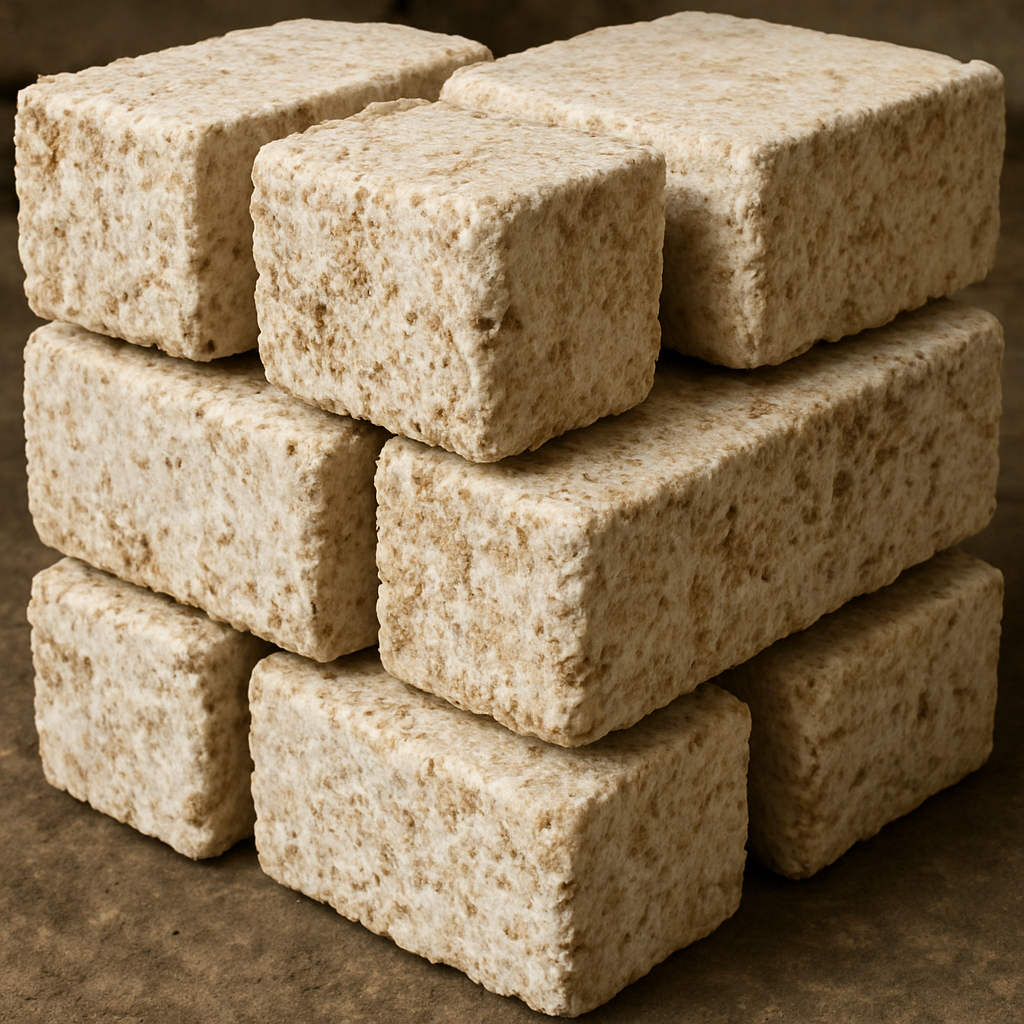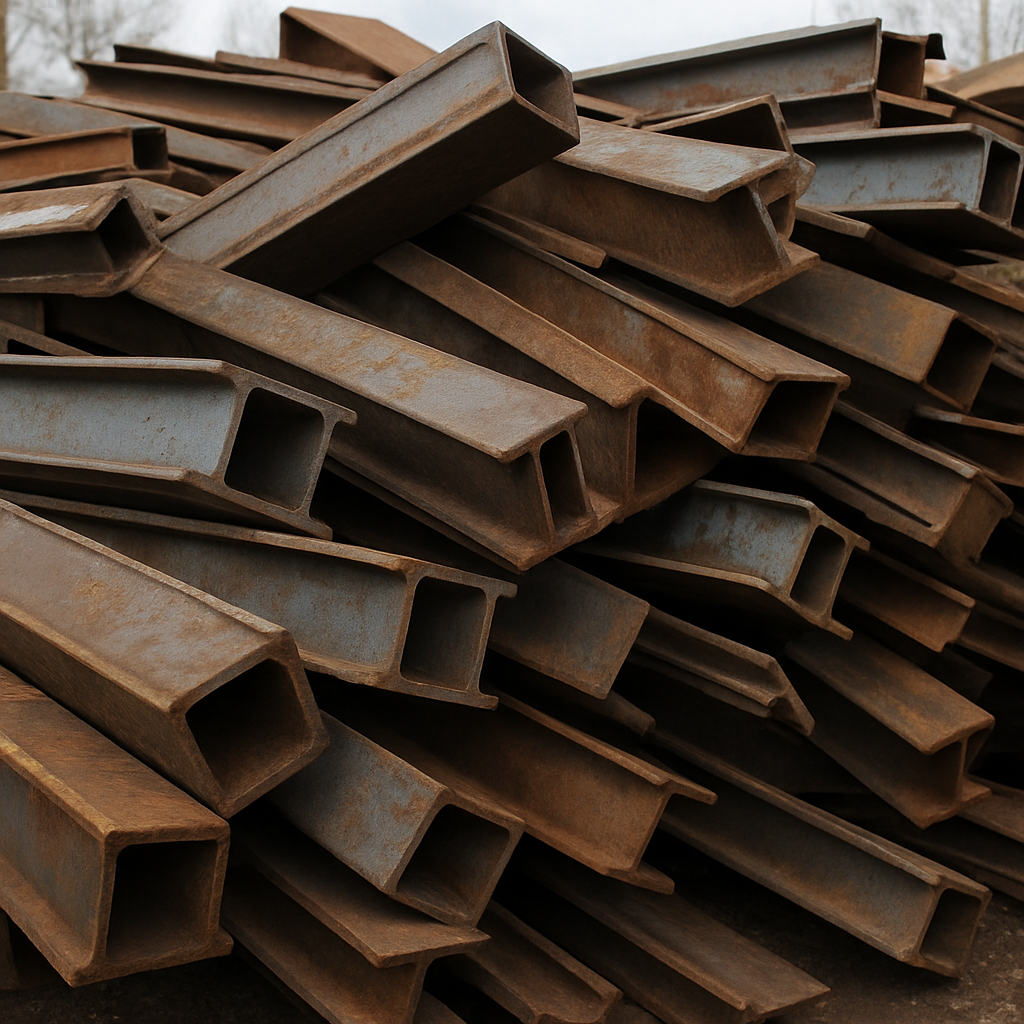Mycelium, the root network of fungi, has emerged as a remarkable building material. It’s biodegradable, grows rapidly, and can be molded into various shapes. This makes it an excellent choice for creating lightweight, strong, and insulating blocks.
Understanding Mycelium’s Growth Cycle
Mycelium thrives in dark, moist environments and grows by breaking down organic matter. This unique growth process allows it to form dense networks that can be harvested for building purposes. The rapid growth cycle of mycelium means it can be replenished quickly, making it a renewable resource.
- The Environmental Impact of Mycelium: The production of mycelium is a low-energy process, as it naturally decomposes and regenerates. This reduces the carbon footprint associated with traditional building materials. Moreover, mycelium’s ability to decompose means it doesn’t contribute to long-term waste, aligning perfectly with zero-waste construction goals.
- Applications of Mycelium in Construction: Beyond building blocks, mycelium’s versatility extends to insulation, acoustic panels, and even furniture design. Its lightweight nature doesn’t compromise on strength, making it ideal for innovative construction solutions. As research progresses, mycelium’s potential uses continue to expand, offering exciting possibilities for sustainable architecture.
2. Hempcrete: The Green Alternative
Hempcrete is made from the inner fibers of the hemp plant mixed with lime. It’s gaining popularity for its insulating properties and carbon-negative nature.
- The Science Behind Hempcrete: Hempcrete is a bio-composite material that combines the best qualities of hemp fibers and lime. The hemp-lime mixture undergoes a chemical reaction that binds the materials together, creating a lightweight, durable block. This process not only locks in carbon dioxide but also enhances the material’s insulating capabilities.
- Hempcrete’s Role in Carbon Sequestration: One of hempcrete’s most significant environmental benefits is its ability to act as a carbon sink. The hemp plant absorbs a considerable amount of CO2 during its growth, and when used in construction, this carbon remains trapped within the hempcrete. This makes hempcrete an effective tool in reducing the overall carbon footprint of buildings.
- Expanding Uses of Hempcrete in Modern Architecture: Hempcrete’s properties make it suitable for a variety of applications, from walls and floors to roofing materials. Its resistance to pests, mold, and fire further enhances its appeal. As building codes adapt to include more sustainable practices, hempcrete is likely to become a staple in eco-friendly construction projects.
3. Recycled Steel: Strong and Sustainable
Steel is a staple in construction, and using recycled steel significantly reduces the carbon footprint. It maintains the strength and flexibility of new steel but is much more sustainable.
- The Process of Recycling Steel: Recycled steel is produced by melting down scrap steel and reforming it into new products. This process consumes significantly less energy compared to producing steel from raw iron ore. By minimizing the need for mining and refining, recycled steel helps conserve natural resources and reduces environmental degradation.
- Structural Integrity of Recycled Steel: Despite being recycled, steel retains its exceptional strength and flexibility. This makes it a reliable choice for both structural and aesthetic applications in construction. Engineers and architects can confidently use recycled steel in everything from skyscrapers to residential homes, knowing it meets the highest standards of performance.
- Economic and Environmental Benefits of Recycled Steel: Choosing recycled steel not only supports sustainability but can also be cost-effective. The reduced energy requirements and raw material costs often translate into financial savings. Additionally, using recycled steel helps builders meet green building certification requirements, which can enhance the value of a construction project.
4. Carbon-Neutral Concrete: The Future of Foundations
Concrete is essential in construction, but its production is carbon-intensive. Enter carbon-neutral concrete, which incorporates waste products and innovative manufacturing to reduce its environmental impact.
- Innovative Ingredients in Carbon-Neutral Concrete: Carbon-neutral concrete often includes supplementary materials like fly ash, slag, or silica fume. These industrial by-products replace a portion of the cement, which is the most carbon-intensive component of concrete. This substitution not only reduces emissions but also enhances the durability and workability of the concrete mix.
- Technological Advancements in Concrete Manufacturing: New manufacturing techniques, such as carbon capture and storage (CCS) and carbon curing, are being developed to further reduce emissions associated with concrete production. These technologies aim to capture CO2 during the production process and incorporate it into the concrete, effectively turning a pollutant into a resource.
- The Long-term Impact of Carbon-Neutral Concrete: As more projects adopt carbon-neutral concrete, the cumulative reduction in emissions could be substantial. This shift not only supports global climate goals but also sets a precedent for other industries to innovate towards sustainability. The widespread use of this material could revolutionize how foundations are built worldwide.
5. Bio-based Insulation: Natural Comfort
by Ashes Sitoula (https://unsplash.com/@awesome)
Bio-based insulation, derived from natural materials like wool, cotton, and cellulose, offers an eco-friendly alternative to synthetic insulation.
- Exploring Natural Insulation Materials: Natural insulation materials are sourced from renewable resources, such as sheep’s wool, recycled cotton, and plant fibers like hemp or flax. These materials provide excellent thermal performance and are biodegradable, ensuring they don’t contribute to long-term waste in landfills.
- Health and Safety Benefits of Bio-based Insulation: Bio-based insulation is free from the harmful chemicals often found in synthetic products, making it a healthier choice for building occupants. These materials are typically non-toxic and hypoallergenic, reducing the risk of indoor air pollution and contributing to better indoor air quality.
- Performance and Applications of Bio-based Insulation: In addition to being environmentally friendly, bio-based insulation offers outstanding thermal and acoustic properties. It is adaptable for various applications, including wall cavities, roofs, and floors. As the demand for sustainable building practices grows, bio-based insulation is becoming a popular choice for eco-conscious builders.
6. Recycled Building Materials: Giving Waste a New Life
Recycling isn’t just for household waste. In construction, using recycled materials like glass, plastic, and wood can significantly reduce environmental impact.
- The Lifecycle of Recycled Building Materials: Recycled building materials are created by repurposing waste products that would otherwise end up in landfills. This process involves cleaning, processing, and reforming these materials into new construction products. By extending the lifecycle of these materials, we reduce the demand for new raw resources and minimize waste.
- Economic Advantages of Using Recycled Materials: Incorporating recycled materials can often lead to cost savings for builders and developers. Recycled products tend to be less expensive than their virgin counterparts, and using them can help achieve green building certifications, which can increase property value and market appeal.
- Creative Design Opportunities with Recycled Materials: Recycled materials offer unique aesthetic possibilities, allowing architects and designers to create distinctive and sustainable structures. From glass tiles and reclaimed wood flooring to plastic lumber, these materials can add character and sustainability to any building project. Their use also promotes innovation in design, pushing the boundaries of traditional construction.
7. Environmentally Friendly Materials: A Broad Spectrum
The push for sustainability has led to the development of various environmentally friendly materials. These include bamboo, straw bales, and rammed earth, each offering unique benefits.
- Bamboo: The Grass of Steel: Bamboo’s rapid growth and natural strength make it an ideal material for construction. It can be harvested sustainably and used in flooring, paneling, and structural elements. Its flexibility and tensile strength rival that of steel, offering a renewable alternative for builders seeking to reduce their environmental impact.
- Straw Bales: Insulation and Sustainability: Straw bales are an excellent insulator and can be used in walls to provide thermal efficiency. This material is not only biodegradable but also readily available, making it a cost-effective choice for sustainable construction. Building with straw bales can significantly lower energy consumption and create comfortable living spaces.
- Rammed Earth: Harnessing the Earth’s Resources: Rammed earth construction involves compacting soil into a solid wall, offering thermal mass and a unique aesthetic. This method uses natural materials and requires minimal processing, reducing the carbon footprint of a building. Rammed earth’s natural insulation properties and rustic appearance make it an attractive option for eco-friendly architecture.
Conclusion: Building a Sustainable Future
As we move toward 2025, the construction industry is set to undergo a sustainable revolution. These innovative materials not only lessen the environmental impact but also offer durability and efficiency. By choosing sustainable building materials, architects and builders can create structures that are not only functional but also environmentally responsible.
Embracing these advancements means a future where construction is both cutting-edge and kind to the planet. The adoption of these materials fosters an industry that respects and preserves natural resources for future generations. As these materials gain popularity, we can look forward to greener cities and a healthier planet.
The journey toward sustainable construction is ongoing, but the groundwork laid today promises a promising future. By integrating these materials into our building practices, we pave the way for an industry that prioritizes the environment without compromising on quality or innovation. Build a sustainable future with Sumer Innovations—where smart design meets environmental responsibility. Let’s build a world where sustainability is at the heart of every building project.







